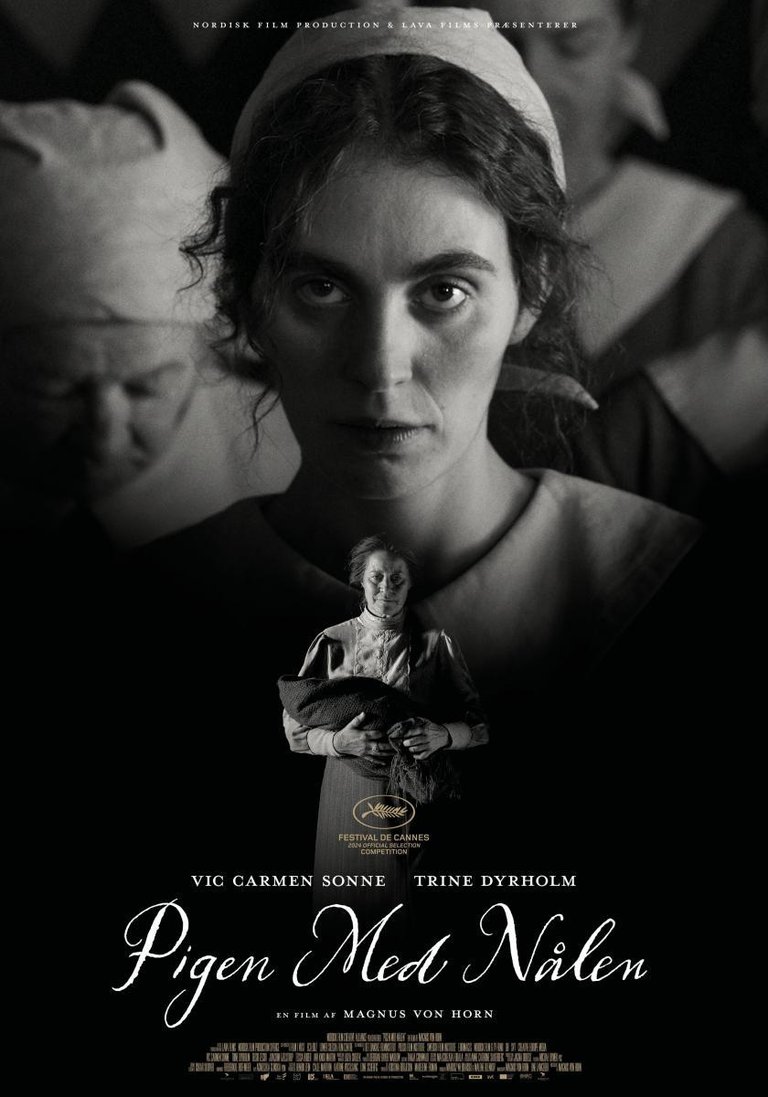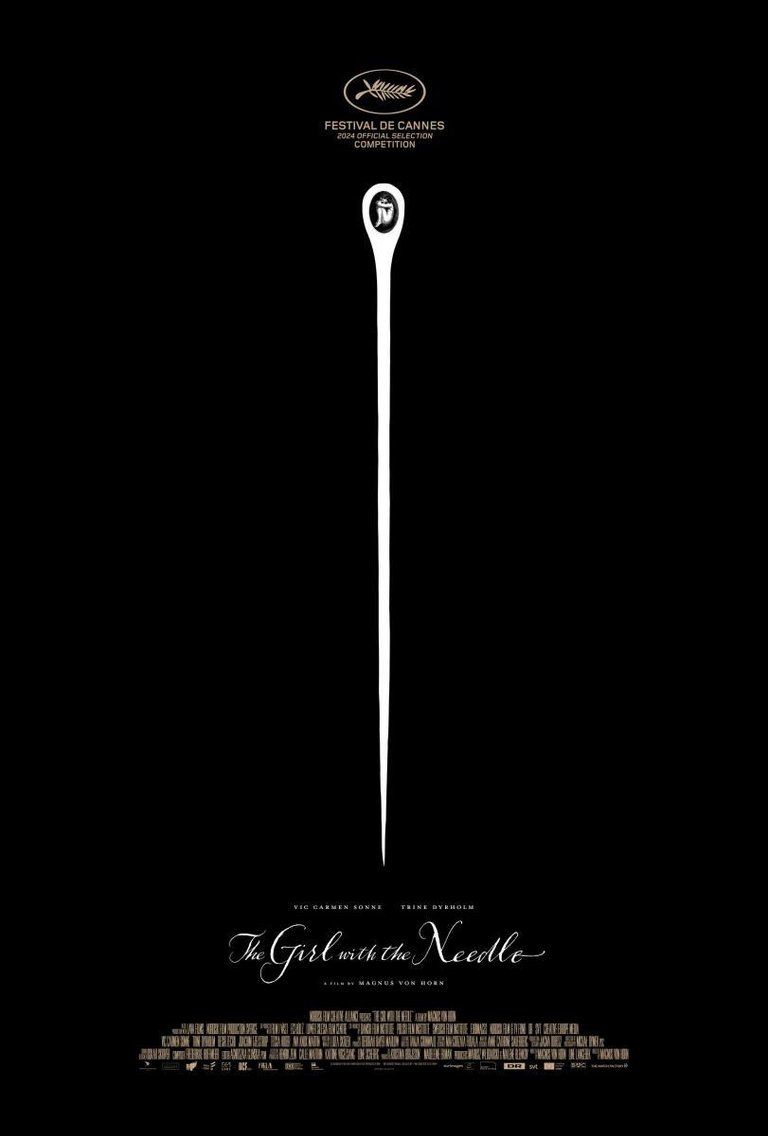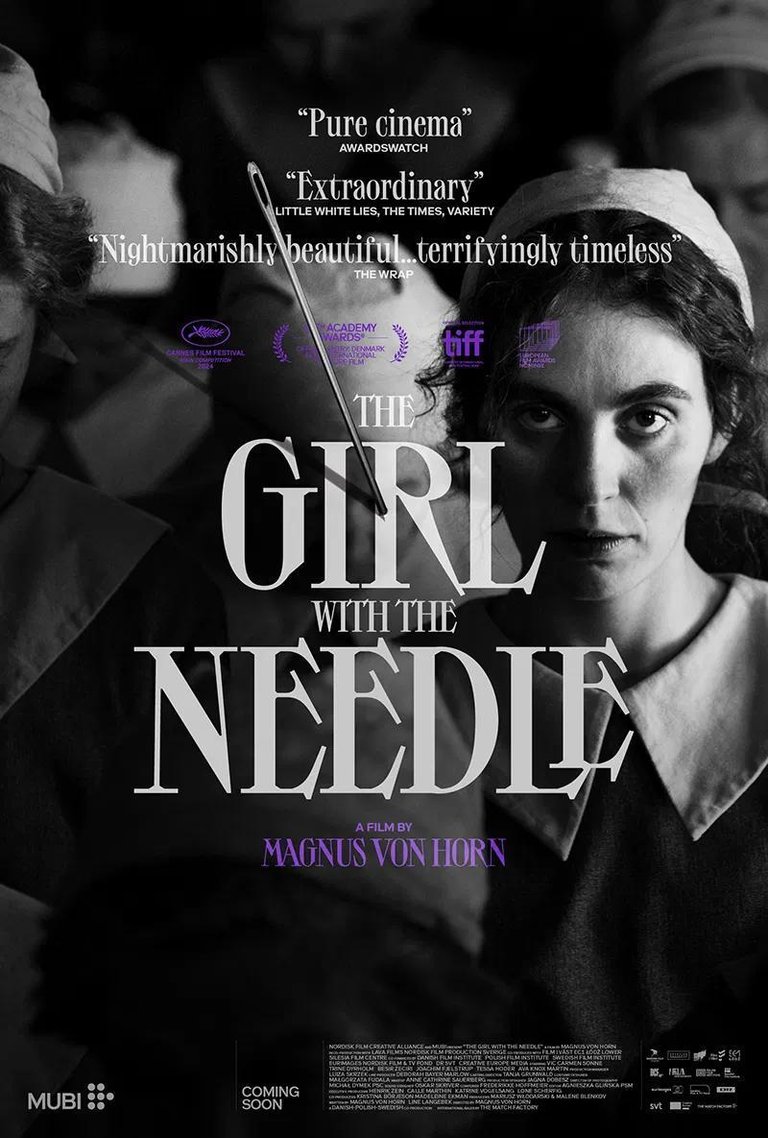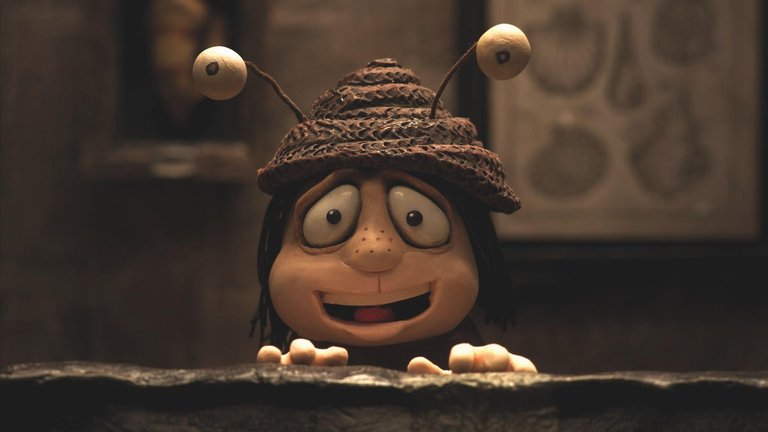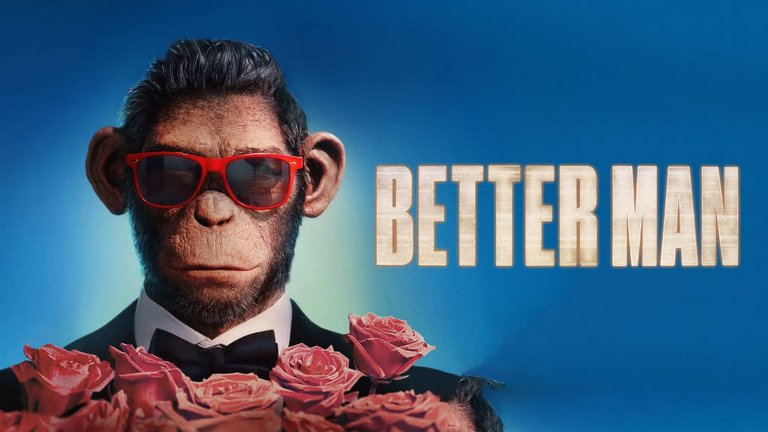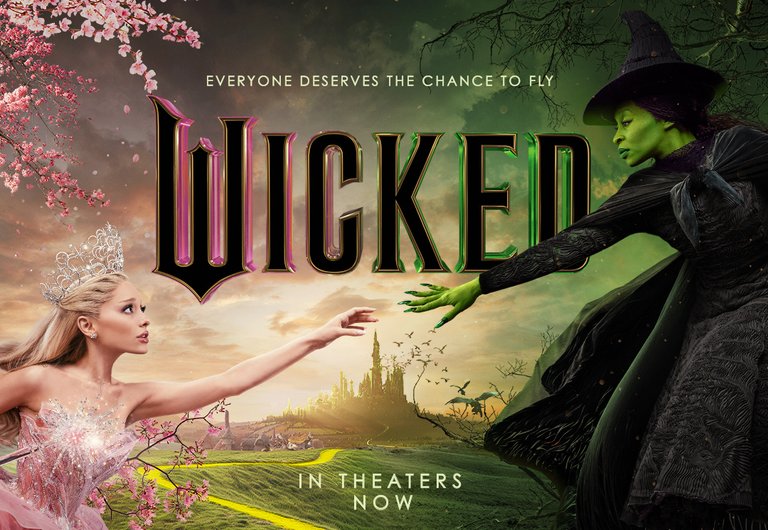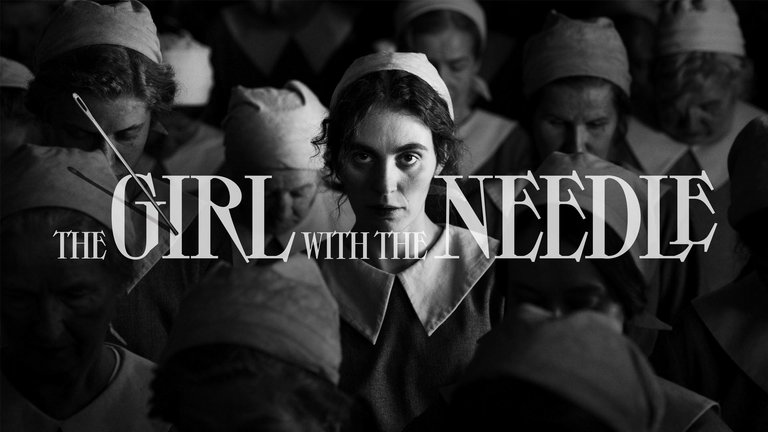
Nominada a los premios de la Academia como Mejor Película Internacional
In two weeks we will be talking about the winners of the Oscars to be held on March 2nd. There's a lot of expectation due to the Emilia Pérez controversy, the possibility of Demi Moore taking the statuette, the nominations that should have been included and were not made (why is the Challengers soundtrack not nominated?), but beyond all the important categories there's one that arouses great interest in me and that is Best International Film. Of the five nominated in this category, I needed to see one and I was able to see it last night thanks to the fact that it's available on MUBI.
Dentro de dos semanas estaremos conversando sobre los ganadores de los premios Oscars a celebrarse el próximo 02 de marzo. Hay mucha expectativa por la polémica de Emilia Pérez, la posibilidad de que Demi Moore se lleve la estatuilla, las nominaciones que debieron incluirse y no se hicieron (¿por qué no está nominado el soundtrack de Challengers?), pero más allá de todas las categorías importantes hay una que me despierta gran interés y es la de Mejor Película Internacional. De las cinco nominadas en esta categoría me faltaba ver una y la pude ver anoche gracias a que está disponible en MUBI.
Pigen med nålenaka (The Girl with the Needle) is a Polish-Danish co-production directed by Magnus von Horn that has managed to get into the final list of candidates to win the Oscar, leaving behind great films such as Touch from Iceland, Waves from the Czech Republic and the Thai How to Make Millions before Grandma Dies. von Horn's film is set in Denmark, during the last days of the First World War and tells the story of Karoline, a young seamstress whose situation is increasingly complicated. Her husband, who is fighting in the war, has not answered any of her letters for the last year, which makes the girl presume he had fallen in combat, but without a death certificate she cannot ask for a widow's pension, money she needs because her job as a seamstress in a factory that makes uniforms is not enough to pay the rent for the apartment where she lived with her husband. After fourteen weeks of late payment, the landlord throws Karoline out on the street and to solve her housing problem, the girl rents a tiny room in deplorable conditions, but it's the only thing she can afford. Shortly afterwards, Karoline is courted by the owner of the factory who, after a brief romance, assures her that they are going to get married, but when the man's mother, who is the owner of the entire fortune, pressures him a little, he relents and Karoline is thrown back into her solitude and her gloomy room with an addition that complicates everything a little more: the girl is pregnant.
Pigen med nålenaka (The Girl with the Needle) es una co producción polaco-danesa dirigida por Magnus von Horn que ha conseguido meterse en la lista final de candidatas a llevarse el Oscar, dejando en el camino grandes películas como Touch de Islandia, Waves de la República Checa y la tailandesa How to Make Millions before Grandma Dies. La cinta de von Horn está ambientada en Dinamarca, durante los últimos días de la primera guerra mundial y cuenta la historia de Karoline, una joven costurera cuya situación se ve cada vez más complicada. Su esposo, que está luchando en la guerra, no ha respondido ninguna de sus cartas durante el último año, lo que hace que la chica lo presuma caído en combate, pero sin un certificado de defunción no puede pedir la pensión por viudez, dinero que le hace falta porque su trabajo como costurera en una fábrica que hace uniformes no es suficiente para pagar el alquiler del departamento en el que vivía con su marido. Tras catorce semanas de retraso en el pago, el casero echa a Karoline a la calle y para solucionar su problema habitacional, la chica arrienda una pieza minúscula en condiciones deplorables, pero es lo único que puede pagar. Poco tiempo después, Karoline es cortejada por el dueño de la fábrica quien tras un breve romance le asegura que van a casarse, pero cuando la madre del hombre, que es la dueña de toda la fortuna, lo presiona un poco, este cede y Karoline se ve de nuevo arrojada a su soledad y su lúgubre habitación con un agregado que lo complica todo un poco más: la chica está embarazada.
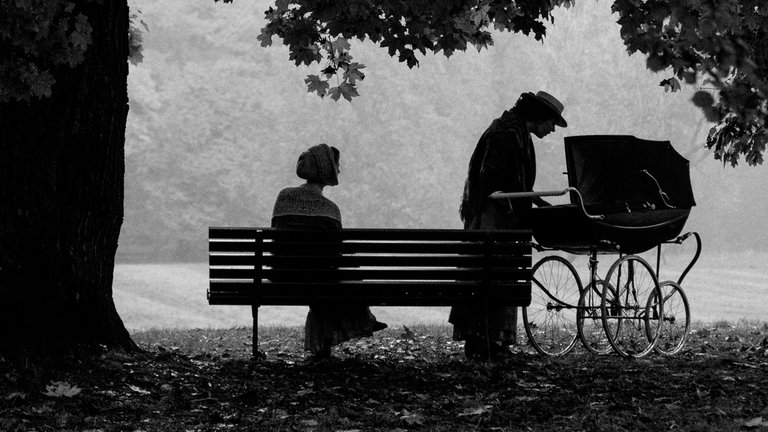
The war has just ended, but the situation is very difficult, especially now that Karoline has lost her lover and her job at the same time, how can she raise a child under those conditions? Since she also doesn't have the money to pay for an abortion, which at the time was not only difficult, illegal but also dangerous, Karoline decides to take matters into her own hands and when she's about to commit something crazy, a woman appears in her life who seems to be the help she needed. The woman tells her that she doesn't need to abort, just give birth to the baby and give it up for adoption if she doesn't want to raise it.
La guerra acaba de terminar, pero la situación es muy difícil, sobre todo ahora que Karoline ha perdido su amante y su trabajo al mismo tiempo, ¿cómo poder criar un hijo bajo esas condiciones? Como tampoco tiene dinero para pagar por un aborto, lo que para la época no sólo era difícil, ilegal sino además peligroso, Karoline decide tomar el asunto en sus propias manos y cuando está a punto de cometer una locura, aparece en su vida una mujer que parece ser la ayuda que ella necesitaba. La mujer le dice que no hace falta que aborte, basta con dar a luz al bebé y darlo en adopción si no quiere criarlo.
On the one hand, there are young, poor women who cannot or do not want to have children, but whose fertility allows them to become pregnant. On the other hand, there are women who have the resources to raise a child, but cannot have one due to age or health problems and who would give anything to have a baby, even if it did not carry their same blood. What harm can there be in serving as an intermediary between both worlds? We deduce that there must be a protocol and in the manners of the woman that Karoline knows we see that this protocol is not respected. We sense that there's something more there. Something gruesome, perhaps, and illegal, without a doubt. But our suspicion is neither acute nor heartless enough to imagine the true story behind that clandestine adoption agency. I would have liked to tell you less about the plot, but I also wanted to introduce you to the central drama of the film. And, believe me, there's much more that I omitted than what I said because the film has several subplots, each one more grotesque and cruel. Due to its content, the way the story is told, the impeccable black and white photography and that eerily appropriate soundtrack, I would define The Girl with the Needle as a gothic thriller that incorporates common elements of other great works. If you pay attention to the history and construction of the images, it's inevitable to perceive certain similarities with the photography of great names in cinema such as Pawel Pawlikowski, some versions of Dracula (including Eggers' Nosferatu) or Orson Welles' Jane Eyre.
Por un lado existen mujeres jóvenes, pobres, que no pueden o no quieren tener hijos, pero cuya fertilidad propicia que queden embarazadas. Por el otro, están las mujeres que tienen los recursos para criar un hijo, pero no pueden tenerlo por problemas de edad o de salud y que darían lo que fuese por tener un bebé, aunque no llevase su misma sangre, ¿qué de malo puede haber en servir de intermediación entre ambos mundos? Deducimos que debe haber un protocolo y en las maneras de manejarse de la mujer que Karoline conoce vemos que ese protocolo no se respeta. Percibimos que hay algo más allí. Algo truculento, tal vez e ilegal, sin duda alguna. Pero nuestra suspicacia no es lo suficientemente aguda ni desalmada para imaginar la verdadera historia detrás de esa agencia de adopción clandestina. Hubiera querido contarles menos sobre la trama, pero también quería presentarles el drama central de la película. Y, créanme, es mucho más lo que omití que lo que dije porque la película tiene varias subtramas, a cada cual más grotesca y cruel. Por su contenido, la forma en que está contada la historia, la impecable fotografía en blanco y negro y esa espeluznantemente apropiada banda sonora yo definiría The Girl with the Needle como un thriller gótico que incorpora elementos comunes de otras grandes obras. Si se presta atención a la historia y a la construcción de las imágenes es inevitable percibir ciertas similitudes con la fotografía de grandes nombres del cine como Pawel Pawlikowski, algunas versiones de Drácula (incluida la Nosferatu de Eggers) o la Jane Eyre de Orson Welles.
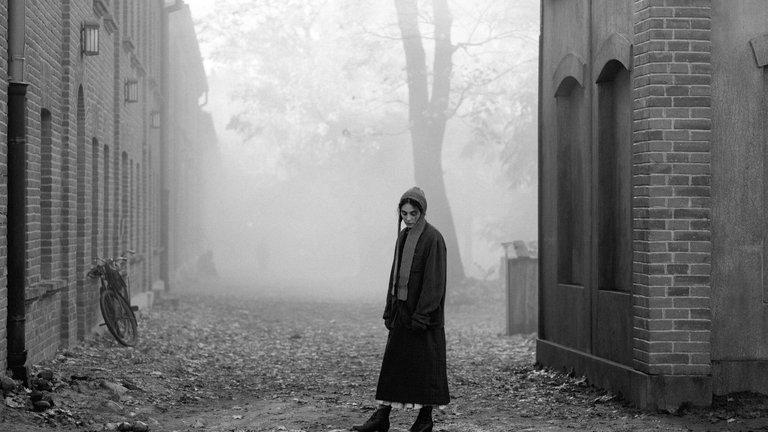
But one of the keys that turn this film into a story that clings to your memory is not only its wonderful photography, but the use of body horror. It doesn't have as many grotesque images as The Substance, but more than once the viewer grits his teeth or turns his face away from seeing the screen while painful, cruel and very, very crude scenes unfold, which I prefer not to reveal, but which I know will be easy to identify for those who have already seen the film.
Pero una de las claves que convierten esta película en una historia que se aferra a tu memoria, no es sólo su maravillosa fotografía, sino el uso que se hace del horror corporal. No tiene tantas imágenes tan grotescas como The Substance, pero más de una vez el espectador aprieta los dientes o vuelve el rostro para no ver la pantalla mientras se desarrollan escenas dolorosas, crueles y muy, pero que muy crudas, que prefiero no revelar, pero que sé que serán fáciles de identificar para quienes ya hayan visto la cinta.
In case you have read out there that The Girl with the Needle is based on real events, it's true, but the adaptation is quite loose. The character of Karoline is a fictional character, even though she inhabits a real historical context. However, who did exist was the woman who helps Karoline. She's Dagmar Overbye, one of the most infamous characters in the history of Denmark and whose actions I will not reveal so that you will be surprised when watching the film, but I can advance you a phrase -said by her character in the film- that summarizes very well what she was: “The world is a horrible place”, is the world really a horrible place? does that explain or justify so much evil? or should we rebel against this cruelty? Karoline's life is tremendously tragic, but even though she lives in the midst of such misery and evil, doesn't she deserve to hold on to hope? The Girl with the Needle tells a heartbreaking, painful story, and it does so in a bleak and powerful way. It's, in the end, an extraordinary film, but will that be enough for it to take home a fifth Oscar for its country? Having seen the five Best International Film nominees I have mixed feelings about picking my favorite, but - without wanting to add to the controversy unnecessarily - I think Emilia Perez is the worst of the five. Flow is amazing, but maybe it won't win the category because it's an animated film, but how do you choose between The Seed of the Sacred Fig, I'm still here and The Girl with the Needle? Which is your favorite of these five? I'll read you in the comments.
En caso de que hayan leído por ahí que The Girl with the Needle está basada en hechos reales, es cierto, pero la adaptación es bastante libre. El personaje de Karoline es un personaje de ficción, aunque habite un contexto histórico real. Ahora bien, quien sí existió fue esa mujer que ayuda a Karoline. Se trata de Dagmar Overbye, uno de los personajes más infames de la historia de Dinamarca y cuyas acciones no revelaré para que se sorprendan al ver la película, pero les puedo adelantar una frase - dicha por su personaje en el film - que resume muy bien lo que ella fue: "El mundo es un lugar horrible", ¿en verdad el mundo es un lugar horrible? ¿acaso eso explica o justifica tanta maldad? ¿o debemos rebelarnos contra esta crueldad? La vida de Karoline es tremendamente trágica, pero aunque viva en medio de tanta miseria y maldad, ¿no merece mantener la esperanza? The Girl with the Needle cuenta una historia desgarradora, dolorosa, y lo hace de una manera sombría y poderosa. Es, a fin de cuentas, una extraordinaria película, pero ¿le alcanzará eso para llevarse el quinto Oscar para su país? Después de haber visto las cinco nominadas a Mejor Película Internacional tengo sentimientos encontrados a la hora de escoger mi favorita, pero - sin intención de aumentar innecesariamente la polémica - creo que Emilia Pérez es la peor de las cinco. Flow es increíble, pero quizás no gane la categoría por ser una cinta animada, pero ¿cómo escoger entre The Seed of the Sacred Fig, I'm still here y The Girl with the Needle? ¿cuál es su favorita de estas cinco? Los leo en los comentarios.
